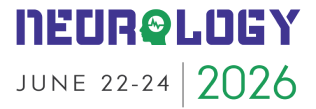Title : Neuroscience of addiction
Abstract:
Addiction can be defined as an irresistible desire for an object, individual or entity although it is known to be harmful to the person physically or psychologically. In addiction physical dependence is explained as changes in the brain structure. In addition to causing addiction in a person, the substances used also cause differences in
the brain's reward system, decision-making and learning mechanisms (1). The positive reinforcement feature’s most important indicator is that the person starts to search for the substance he/she uses so that person starts to crave the substance. The reward system plays a big role in becoming addicted. The reward system gets affected by addiction because addiction causing substances increase the dopamine release in the ventral striatum. Mesocorticolimbic system has an important role in the reward system because it contains the dopaminergic pathways. The mesolimbic pathway, the mesocortical pathway, the nigrostriatal pathway, and the tuberoinfundibular pathway are the four dopaminergic pathways. Dopamine is transported from the VTA (ventral
tegmental area) to the nucleus accumbens and amygdala via the mesolimbic pathway. Depression has been linked to dysfunction in this system. The ventral tegmentum is linked to the prefrontal cortex via the mesocortical pathway. It is strongly linked to the frontal lobes. It is thought to be involved in a variety of cognitive processes, including motivation, emotion, and executive functions. The primary role of the nigrostriatal pathway is to affect voluntary movement, feeding behavior, and movement via basal ganglia motor loops. The nigrostriatal dopaminergic pathway influences cognition, reward, and addiction. Parkinson's disease is caused by a deficiency in this. Finally, the tuberoinfundibular pathway, which is one of the major neuronal networks in the brain that uses dopamine as its primary neurotransmitter. Dopamine release in this route modulates pituitary gland prolactin output.
Keywords: Reward system, dopaminergic pathways, addiction, mesocorticolimbic system
Audience Take Away
- Addiction and its affects on brain functions
- The process of addiction
- The dopaminergic pathways and their functions
- The reward system




